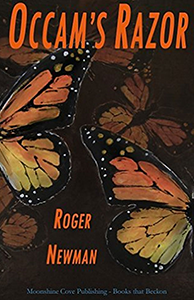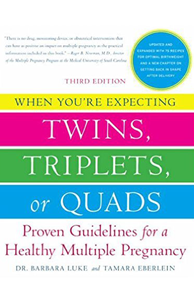That’s what I used to tell my younger brother when he was bugging me. I thought of it recently when I read a Consumer Reports article entitled “Painkillers can pose problems for new mothers.” The article cites several scientific papers published in a special July 2017 edition of Obstetrics and Gynecology focusing on prescription opioid abuse.
The Consumer Reports article, as well as the cited studies, summarize by concluding that after cesarean deliveries, “women may go home from the hospital with far more opioid pills than needed.” The author of two of the articles states that such over prescription “may precipitate an affinity for the drug that leads to subsequent chronic use and even abuse.”
I’ve never been much of a believer in the slippery slope argument. I didn’t believe that Australia would fall to the Communists if Vietnam fell. I don’t believe that contraception leads to promiscuity. And, I don’t believe that giving a few extra Vicodin to a woman recovering from a cesarean will lead to a walking dead apocalypse.
What I do believe, is that the over reading of studies such as this will do more harm than good. It will again lead to societal problems being fought out on the backs of new mothers. A fight that doesn’t do a thing to help a societal concern, but does hurt young mothers who’ve just been sliced open and sent home with a half dozen oral analgesics, and a recommendation to switch over to Motrin in a couple of days.
Make no mistake, we are in the midst of a prescription opioid epidemic. Emergency rooms visits for overdosage and hospital admission rates for substance abuse have skyrocketed. The rates of death due to overdose have quadrupled in the last 15 years. On September 11, 2017, and every other day this year, 142 Americans died from a drug overdose; more than the number killed by gun homicides and motor vehicle accidents combined. I have previously blogged about who is primarily responsible for this deadly epidemic, and it isn’t new mothers recovering from a cesarean delivery.
Also, make no mistake, physician and dentist prescribing has contributed to the current state. The rise in deaths due to narcotic overdose has been paralleled by an unjustifiable rise in physician written scripts for these drugs. Between 1991 and 2011, the number of opioid prescriptions written in the United States rose from 76 million to 219 million. Somebody has a great business model. Having performed cesareans in both 1991 and 2011, I, as well as any other Ob-Gyn, can assure you that none of this increase is due to women receiving more narcotics following a cesarean delivery. We gave them oral narcotics then and we do now. In fact, now we give them lower doses for fewer days.
If we aren’t part of the problem then we aren’t going to be the solution.
Maybe I’m too touchy, and certainly, I am prone to hyperbole, but I get tired of women being scapegoated for the problems in medicine and the country. We finally figured out that the cost of medical care is too high in the United States. We needed managed health care to save us from ourselves. What did that accomplish? Not much besides reducing postpartum hospital stays to 24 hours after a vaginal delivery and 2 days after a cesarean.
Too much childhood asthma, allergies, gastrointestinal illness and obesity? Obstetricians aren’t doing enough to convince their patients to breastfeed. An epidemic of autism? Must be the terbutaline and ritodrine that obstetricians use for preterm labor. Too many hospital readmissions? Let’s develop some quality improvement and patient safety standards. Standards that disproportionally target obstetrics and gynecology services. Seems that there are few systemic problems in medicine that can’t be fixed on the backs of the youngest, least profitable and most vulnerable patients in the hospital.
We better check to make sure that post-operative obstetrical patients aren’t getting any extra pain pills.
Two of the studies reported in Obstetrics and Gynecology had similar designs. One involved follow up interviews 2 weeks after a cesarean delivery in a large multi-centered study at six major academic centers. The other interviewed women two weeks after delivery, and then weekly until no further patients were taking postoperative opioids at Vanderbilt University.
In the multicentered study, 615 women filled a prescription for a 5mg oral opioid such as oxycodone (82.1%) or hydrocodone (8.7%). The median number dispensed was 40 tablets and the median number consumed was 20. At 2 weeks, 514 women (83.6%) still had unused pills, and of those, 95.3% had not disposed of the excess. Fewer than 5% of patients required a refill prescription.
In the Vanderbilt University study, follow up was available for 179 women who’d had a cesarean delivery. They found a similar pattern of results. The women received discharge prescriptions for 5mg of oxycodone and a median of 30 tablets. Most (but not all) of those women filled their prescriptions(83%), and they used opioids for an average of 8 days. Of those that filled their prescriptions, 75% ultimately had unused tablets. Almost all of them (94%) kept their leftovers and 63% stored them in an unlocked location. Only 4 women refilled their prescriptions.
Both studies concluded women undergoing cesarean delivery received prescriptions for an excessive number of opioid tablets. True, but not true for all. Extra, unused pain pills, were not being disposed of as recommended. Nor were the extra opiates being stored as they should be, making them subject to abuse, accidental consumption or diversion into the community.
So where does this research go? Obstetrics and Gynecology has the highest rated impact factor in our speciality. The multicentered study concluded that the number of prescription opioids provided after a cesarean could be safely reduced. The Consumer Reports number one recommendation was to “Go Home with Fewer Pills”. The Vanderbilt study suggests that dosing should be individualized, but for routine patients, fewer pills should be given.
Really? Shortchanging post-op obstetrical patients is an important step in curbing the country’s opioid crisis? Let’s think about that. Or, as we say in medicine, what is the evidence basis for that belief.
Do we really believe that our postpartum prescribing is the first hit to a lifetime of addiction? If that were the case, would you expect to find that 75-85% of the women had leftover tablets 2 weeks following surgery? I don’t think I’ve ever met a drug seeker who admitted they had opioids left over. Would we expect that only 4 of 179 women would get their initial prescription refilled? Four of 179 is almost certainly lower than the number of women with wound infections or breakdowns. I’m assuming they all needed a refill. Most studies have demonstrated that post-surgical (excluding dental) opioid use is an uncommon antecedent of later narcotic abuse.
If we are going to recommend taking home fewer pills, what are the guidelines as to the right number is? Massachusetts recently enacted legislation mandating that initial opioid prescriptions be limited to no more than a 7 day supply. A 5 mg oxy- or hydrocodone is routinely dosed 1 pill (some people require two) every 4 hours, which would be 6 pills/day or 42 pills over 7 days. The CDC concurs stating that “3 days or less will often be sufficient” and that “more than seven days will rarely be needed.”
Both the Massachusetts law and the CDC recommendations support a prescription of about 40 tablets with the expectation that several will be left over for most women. Considering that the clinicians in both of these studies are already prescribing the same or fewer pills than currently recommended for postoperative cesarean pain, what’s the downside of “Go Home with Fewer Pills” in order to make sure that everyone has enough.
Obviously, first, we have an obligation to treat the pain we inflict. Not many, but at least one out of seven women used all their pills or required more. Second, good postpartum pain relief has been associated with enhanced mother-infant bonding, increased rates of breastfeeding, less postpartum depression and a quicker return to normal activities of daily living. Third, there is the irritation and inconvenience of under-prescribing, including strict state restrictions on phoning in narcotic prescriptions. Having to return to the hospital or clinic for a refill wastes everyone’s time, costs unnecessary health care dollars and stigmatizes the woman as a “drug seeker.”
What about all those unused pills floating around? Given the numbers of cesareans done each year in the United States, we’re talking about millions of pills. How many of those end up on the street? I wonder why almost all women had a handful left at two weeks regardless of how many they initially received. I wonder if anyone on the study team has ever been delivered by cesarean. I can’t prove it, but I’d wager a lot held some back for the unexpected abdominal strain that might still occur. The abdominal wound isn’t completely healed for 6 weeks, and maternal responsibility is only going to increase as paternal support inevitably wanes. It would be interesting to know how many pills are actually left over at 6-8 weeks postpartum.
Even without pain or maternal responsibility, I’d hold onto them too. I’m not running to the hospital or spending more hard earned money for another prescription for a sprained ankle, pinched nerve, migraine, kidney stone, dislocated finger, sciatica, bar fight, fender bender or whatever. The suggestion that the drugs be returned to an authorized state or federal take-back location is laughable. However, there is no argument with the advisory to keep the extra pills in a safely secured location. Good counseling tip.
If we really want to do something meaningful, go to the root of the problem which is reducing the epidemic of cesareans. I have blogged on that before as well. Let’s focus on getting women off prescription opioids during their pregnancy. It is a controversy in obstetrics where there shouldn’t be one. Let’s recognize and work against the drug companies who both engineered and continue to profit from this epidemic. Ask government and our medical societies why they worry about whether we prescribe more or less than seven days worth of narcotics while failing to shut down the “pain management” factories that fill narcotic prescriptions at the same rate that McDonalds serves drive through hamburgers.
ADDENDUM: Nothing feels better than being proven right. I wrote this last night during the Sunday night football game. I decided that I would edit it this morning. Last night my concern for an adverse effect on Ob-Gyn prescribing for postoperative patients was mostly speculative. In this morning’s Post and Courier there is a reprinted article on page B1 by Jane Brody who is a “Personal Health” columnist for the New York Times. The Donald may not like the Times, but a lot of people read it. She cites a review by Dr. Mary Bicket from Johns Hopkins of 810 patients from 6 studies who underwent 7 different operations. As with the Ob-Gyn studies, 42% to 71% did not use all the opioids they received, and 67% to 92% still had unused drugs at home. The accompanying cartoon show a giant white-coated hand and a giant bottle of pills being shoved at a tiny patient. The tag line with the cartoon states that opioids “are commonly given to patients following surgery, whether they need them or not.”
Selecting the perfect Springsteen song for this blog proved difficult. He has several powerful songs about drug abuse such as “Sinaloa Cowboys” and “Meeting Across the River” but those dealt with illegal drugs. I eventually chose “Long Walk Home” which may be Bruce’s most powerful musical and cinematic statement since 2001. It is song about the cracks in the foundation of our society, and especially, how ordinary people are the victims of a country unable to deal with these problems. He sees the country as no longer supporting those who built it (and, I’d bet, he’d include pregnant women among them) and he finds their suffering unacceptable. The solution is to stick together and do the things that we know are right and just. The lyrics and music are not at odds. The E Street Band is sounding an alarm, asking us all to wake up and pay attention. The guitars are an internal combustion engine driving the energy forward. The most breathtaking moment is the hand off to the sax solo, both at the bridge and at the end: Bruce stops soloing under the rhythm line, and after a breath, Clarence the Big Man Clemons (RIP- big mon) comes in for his solo picking up the baton from Scooter. Sometimes despite the “evidence” we have to remember that “Certain things are set in stone; Who we are, and what we’ll do, and what we won’t.”
Roger B. Newman, MD is a Professor and Maas Endowed Chair for Reproductive Sciences at the Medical University of South Carolina. However, the opinions express are only those of the author and not my employers.








Thanks for shedding some much needed perspective on this! As a mother who had significant pain following my C-section, I agree that women who have had legitimate surgery that is expected to cause pain (oh and they are caring for a small human and toting engorged breasts around 24/7 rather than the usual postop bedrest)should not be shamed for needing pain medication and should not be punished for the larger societal struggles with addiction.
Angela, thank you for the feedback. I received a good bit of feedback on this blog. I may use your comments in a follow up pro and con on my opioid post. Anonymous Don’t know if you saw the 60 minutes expose on the law pushed thru by drug company lobbyists to protect themselves from DEA enforcement. Shocking. Check it out if you haven’t seen it. ……………..r
Well written. The risk of focusing on one Rhino when a whole bunch of animals are part of a multifactorial issue, including socio-economics, will result in no progress and wrong allocation of resources.
Thanks for reading Michael and the comment. I received a good bit of feedback on this blog. Sorry we are missing the party out in Austria, but Diane and I do hope to get to San Francisco this year. Whenever I hear from you I am reminded how much I miss talking with you…………….r
Interesting blog and opinions. However, I don’t believe the articles in the Green Journal are proposing this battle get fought on the backs of pregnant women or new mothers. Ob Gyn patients should be included in the over-prescribing initiatives, not excluded. There is data that about 3/1000 women who had cesarean deliveries become addicted to the drugs we over prescribe. Although its a potential burden to have new mothers have to come back in for a refill if 20 tablets isn’t enough–but based on the use of the drugs in the studies cited, perhaps the mother who is still in that much pain should be evaluated since her pain is lasting longer than normal…maybe a wound infection or endometritis? Maybe depression? Maybe an underlying opioid use disorder? What about abuse?
Nancy, I appreciate your thoughtful comments. They are important points well taken. I received a lot of comments back after my opioid blog. I plan to revisit this blog with a pro-con follow up with my next one, and I plan to include your comments. Thanks again and I think you are doing a great job as editor of the Green. Have a great weekend…………………roger